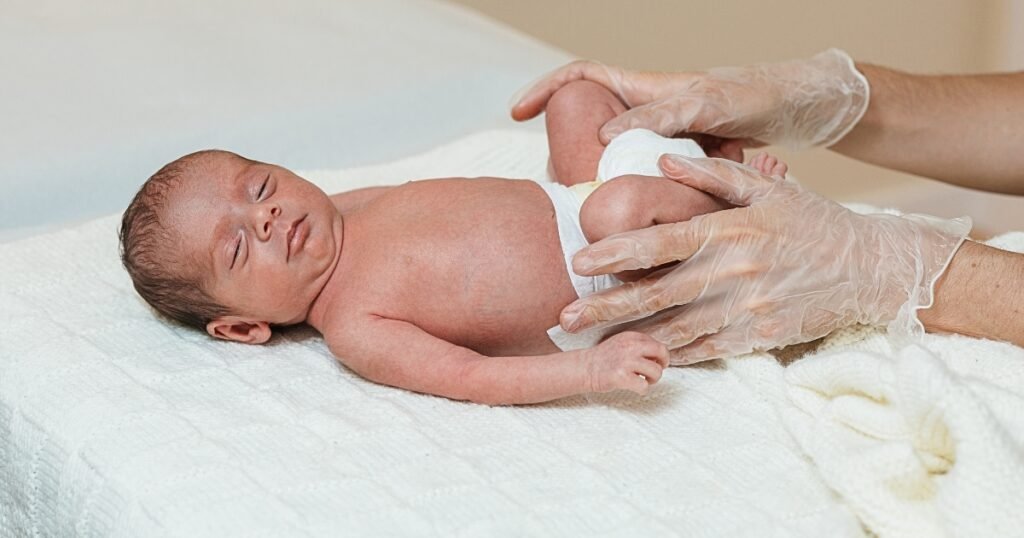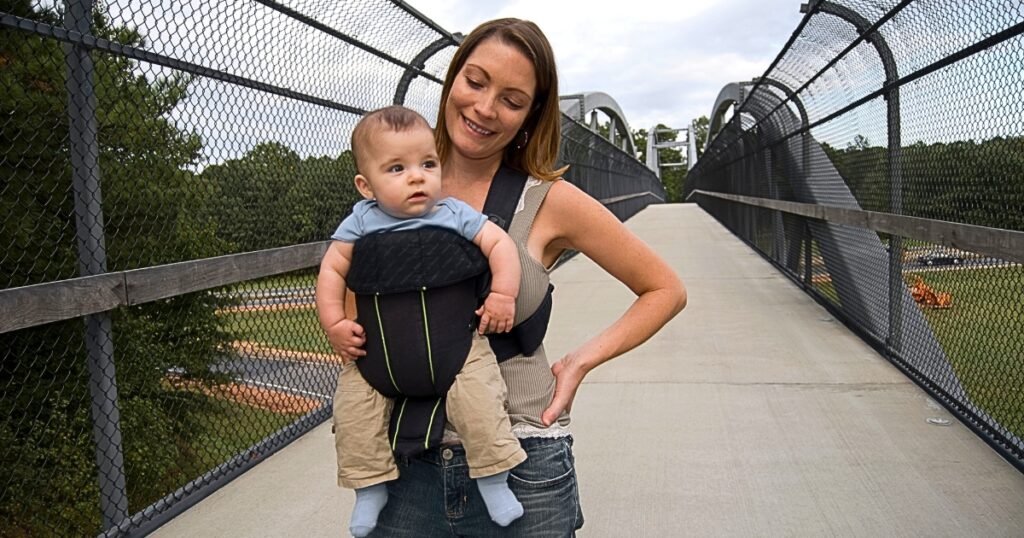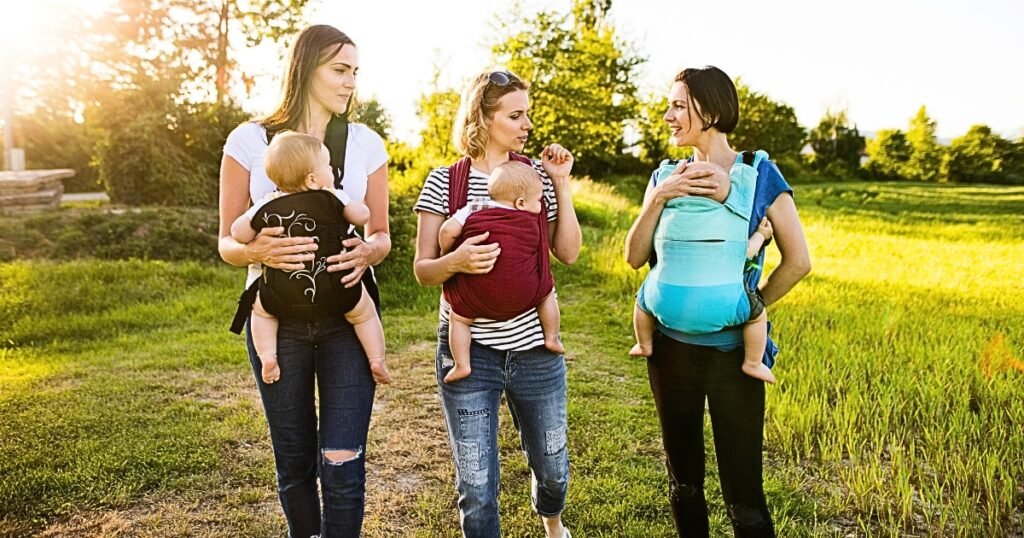Last Updated on 28 June 2024
As a pediatrician, I often discuss hip healthy baby carriers with new parents eager to keep their babies close while having their hands free. Choosing a baby carrier can be overwhelming, with so many options on the market, but picking one that supports your baby’s hip development is crucial. I remember one family, in particular, who came to me concerned about their baby’s hips. They were using a carrier that, while popular, didn’t support proper hip alignment. This can be a common issue, but fortunately, you can easily address it with the correct information.
Hip health is especially important in a baby’s early months and years. Babies are born with soft, malleable bones that gradually harden and take shape. The hip joint, in particular, is delicate and can be significantly influenced by the position it is held in. When a baby is carried in a position that doesn’t support its hips correctly, it can lead to developmental issues such as hip dysplasia.
A good baby carrier should hold your baby in the “M” or “frog-leg” position. This means the baby’s knees should be higher than their bottom, and the legs should be spread apart to wrap around the torso. This position supports the natural development of the hip joints.
Take another example: Sarah (not her real name), a first-time mom, came to me worried about her baby, who had been diagnosed with mild hip dysplasia. She wanted to continue babywearing but was unsure how to do so safely. I guided her in choosing a hip-healthy carrier that provided the proper support. This gave Sarah peace of mind and allowed Lucas to enjoy being close to his mom while ensuring his hips developed correctly.
Choosing a hip-healthy baby carrier doesn’t have to be complicated. Start by looking for carriers certified by the International Hip Dysplasia Institute. These carriers are designed to promote healthy hip positioning. Additionally, adjustable carriers that grow with your baby can be a great investment. They allow you to maintain the correct positioning as your baby grows and needs change.
Remember, it’s not just about the carrier but also how you use it. Make sure to follow the manufacturer’s instructions for proper usage and fitting. Always check that your baby’s legs are in the correct “M” position, and adjust the carrier as needed to maintain this positioning.
In summary, selecting hip healthy baby carriers is essential for your baby’s physical development. Ensuring your baby’s hips are well supported can help prevent developmental issues and keep them comfortable and happy. Exploring the world of baby carriers opens up a realm of choices for parents. Understanding the significance of hip health in infants is crucial when selecting the right carrier. From the early months of life, ensuring healthy hip development through proper positioning is essential. As a pediatrician, I aim to provide you with the knowledge and tools to make informed choices for your child’s health. So, let’s embark on this journey together, ensuring our little ones grow up with strong, healthy hips!
Understanding Hip Health in Babies
Babies’ hip health is vital for their overall well-being. Proper hip development is crucial during the early months of life. Ensuring that a baby’s hips are positioned correctly can help prevent hip dysplasia, a condition where the hip joint is unstable. By maintaining a stable position, such as the “M” or froggy position, you can support the natural development of the hip joint. Understanding the significance of healthy hip positioning is essential for every parent to promote their baby’s healthy growth.
Proper hip development is crucial for babies, as it sets the foundation for their overall health. Healthy hip positioning is vital to prevent hip dysplasia, especially in the first few months of life. The hip joint is most unstable in the early months, making it susceptible to dislocation. Encouraging the natural development of the hip joint through correct positioning helps reduce the risk of hip disorders later in life.
Identifying Risk Factors for Hip Dysplasia
Hip dysplasia risk factors include breech birth, family history, and tight swaddling. Babies born in the breech position are more prone to hip issues, so extra caution is advisable if it runs in the family.

Avoid swaddling the legs tightly together to allow for proper hip development. Identifying these risk factors early can aid in proactive management and ensure healthy hip positioning for your baby. Be mindful of these factors to promote optimal hip health as your baby grows.
Types of Baby Carriers and Their Impact on Hip Health
Structured carriers, wraps, and slings differ in how they affect hip health. Structured carriers offer more support and maintain a stable position for the baby’s hips. Wraps and slings allow for a more customizable fit but require careful attention to hip positioning. When choosing a carrier, consider how it promotes the natural development of the baby’s hips by allowing the legs to rest in a spread-squat position. Understanding these distinctions will help select a carrier prioritizing healthy hip development.
Structured Carriers vs. Wraps and Slings
When considering structured carriers versus wraps and slings, it’s vital to consider the ergonomic support they provide for your baby’s hip development. Structured carriers offer firm positioning, ensuring your baby’s hips are stable and promoting healthy hip positioning. On the other hand, wraps and slings allow for more flexibility and natural movement, which can benefit the baby’s comfort and encourage free movement of the hips. Both options have advantages, so finding the right balance between support and flexibility is crucial.
Evaluating Ergonomic Features for Hip Safety
When selecting a baby carrier, consider the ergonomic design for optimal hip safety. Look for carriers that support the baby in a squat or straddle position, promoting healthy hip development. Check for adjustable seating to ensure the baby’s legs are in a spread-squat stance, fostering the natural alignment of the hip joints. Prioritize carriers that allow the baby’s weight to be evenly distributed, reducing strain on the hips and spine. Evaluate the carrier’s structure to maintain the baby’s stability while enabling free movement for healthy hip positioning.
Criteria for Choosing Hip Healthy Baby Carriers
Look for carriers with adjustable features to support your baby’s healthy hip positioning. Ensure the carrier allows the baby’s legs to be spread straddle, promoting optimum hip development. Consider the baby’s weight distribution, comfort, and the carrier’s width to provide stability. Choosing a carrier that facilitates natural hip development and allows for free movement of the hips is key to promoting healthy hip joints.
Recognizing the International Hip Dysplasia Institute’s (IHDI) Certification
When selecting a baby carrier, look for the International Hip Dysplasia Institute’s (IHDI) certification. This recognition ensures the carrier promotes healthy hip development by supporting the baby in a natural hip-friendly position. IHDI-approved carriers maintain the baby’s legs in a spread-squat position, which is ideal for the baby’s hip joints. This certification indicates that the carrier allows for the free movement of the hips, reducing the risk of hip dysplasia and other hip disorders. Choose wisely for your baby’s hip health.
When selecting a baby carrier, look for adjustable features that cater to your baby’s hip health. Opt for carriers that allow the baby’s legs to be in a spread-squat position. Ensure the airline evenly supports the baby’s weight, promoting stable hip positioning. Adjustable width and depth settings can accommodate the baby’s growth and development. Prioritize carriers with ergonomic designs recommended by experts. These features promote healthy hip positioning and reduce the risk of hip dysplasia in infants.
Practical Tips for Using Baby Carriers Safely
Correct positioning is crucial for hip health. Ensure your baby’s knees are higher than their hips and their weight is evenly distributed. When using a carrier, opt for the squat or jockey position to support the natural development of their hips. Remember, older babies should face outward with their legs in a straddle position. This aligns the hip joint correctly, reducing the risk of hip dysplasia. Avoid dangling legs, which can strain the hip socket. Regularly check for discomfort, and always follow experts’ guidelines. By following these simple steps, you can promote healthy hip growth for your baby.
Duration and Frequency of Carrier Use
It is essential to consider how long and often you use hip-healthy baby carriers. Aim for shorter durations, especially for newborns, gradually increasing as your baby grows. Frequent short sessions are better than extended periods. Experts suggest limiting continuous use to around 30-45 minutes, allowing breaks to ensure proper circulation and prevent strain on your baby’s developing hips. Remember, moderation is key to supporting your baby’s hip health while enjoying the convenience and comfort of babywearing.

In conclusion, choosing a hip-healthy baby carrier is crucial for supporting your baby’s hip development. Understanding the importance of hip health and considering ergonomic features are key factors in selecting the right carrier. Look for certifications like the IHDI and adjustable features for optimal hip safety. Remember to follow expert advice on correct positioning and safe usage to prevent hip dysplasia. Prioritize your baby’s comfort and well-being by investing in a carrier that promotes healthy hip development. Your baby’s comfort and safety are paramount when it comes to babywearing.

